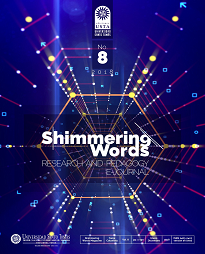Programa de circuitos SNAP promovido por la universidad Santo Tomás y la facultad de ingeniería electrónica
Contenido principal del artículo
Resumen
El presente artículo presenta una reseña de la forma cómo la Facultad de Ingeniería Electrónica lleva a cabo el programa de Proyección Social, relacionado con procesos de enseñanza aprendizaje. Uno de estos es el programa llamado Snap Circuits, debido a que fácilmente se pueden construir circuitos. Este artículo presenta un nuevo enfoque de los procesos de enseñanza, mezclando las prácticas con los Kits de Snap Circuits y guías escritas que promueven el conocimiento de STEM. Para la Facultad es importante que otros programas de ingeniería conozcan la forma de reforzar las fortalezas educativas cuando se asocia la educación en secundaria con la educación superior, en el mismo sentido, cómo a nivel global la educación debe estar orientada para dar solución a las problemáticas de la sociedad. Tal como lo describe el Instituto de Ingenieros Eléctricos y Electrónicos IEEE en su programa Engineers Demonstrating Science, an Engineer Teacher Connection or EDS-ETC, en el mundo cada vez es menor el número de estudiantes que escogen Ingeniería como una de sus elecciones profesionales, por lo tanto, hay que hallar estrategias orientadas a cautivar a los estudiantes de educación media en el estudio de la Ingeniería. Ellos deberían conocer una forma fácil y práctica de cómo aprender los conceptos de ingeniería.
Detalles del artículo
Cómo citar
Barón Barón, A. Ávila, & Casallas Gutiérrez , R. (2019). Programa de circuitos SNAP promovido por la universidad Santo Tomás y la facultad de ingeniería electrónica. Shimmering Words: Research and Pedagogy E-Journal, 8, 102-114. Recuperado a partir de http://revistas.ustatunja.edu.co/index.php/shimmering/article/view/1799
Sección
Artículos-8
Citas
Anwari, I. (2015). Implementation of Authentic Learning and Assessment through STEM Education Approach to Improve Students’ Metacognitive Skills. Tokio, Japan.
Fairweather, J. (2008). Linking Evidence and Promising Practices in Science, Technology, Engineering, and Mathematics (STEM) Undergraduate Education.
Felicidad, G. (2002). Cómo elaborar unidades didácticas en la educación infantil. España: Cisspraxis.
Flux, F. a. (13 de 3 de 2011). Fisics and Flux. retrieved from: http://aplusphysics.com/flux/aplusphysics/snap-circuits-for-em-labs-edtech- physicsed/
Guarín, F. (2014). Eds-Etc. retrieved from: https://www.youtube.com/watch?time_continue=11&v=6NlgiYTYfRw
Labov, J. B. (2009 ). Effective Practices in Undergraduate STEM Education Part 1: Examining the Evidence. Life Science Education, 157-161.
Schwartz, X. G. (2015). Classroom Implementation of Active Instructional Strategies for Undergraduate STEM Education . International Journal of Information and Education Technology, 688-692.
Fairweather, J. (2008). Linking Evidence and Promising Practices in Science, Technology, Engineering, and Mathematics (STEM) Undergraduate Education.
Felicidad, G. (2002). Cómo elaborar unidades didácticas en la educación infantil. España: Cisspraxis.
Flux, F. a. (13 de 3 de 2011). Fisics and Flux. retrieved from: http://aplusphysics.com/flux/aplusphysics/snap-circuits-for-em-labs-edtech- physicsed/
Guarín, F. (2014). Eds-Etc. retrieved from: https://www.youtube.com/watch?time_continue=11&v=6NlgiYTYfRw
Labov, J. B. (2009 ). Effective Practices in Undergraduate STEM Education Part 1: Examining the Evidence. Life Science Education, 157-161.
Schwartz, X. G. (2015). Classroom Implementation of Active Instructional Strategies for Undergraduate STEM Education . International Journal of Information and Education Technology, 688-692.

